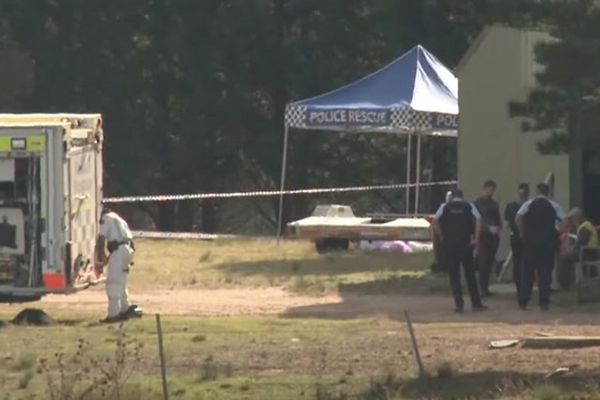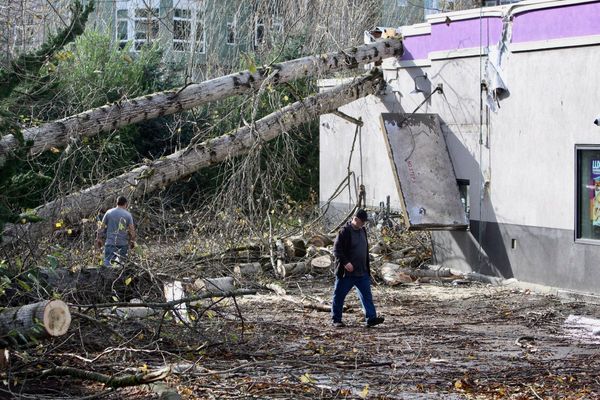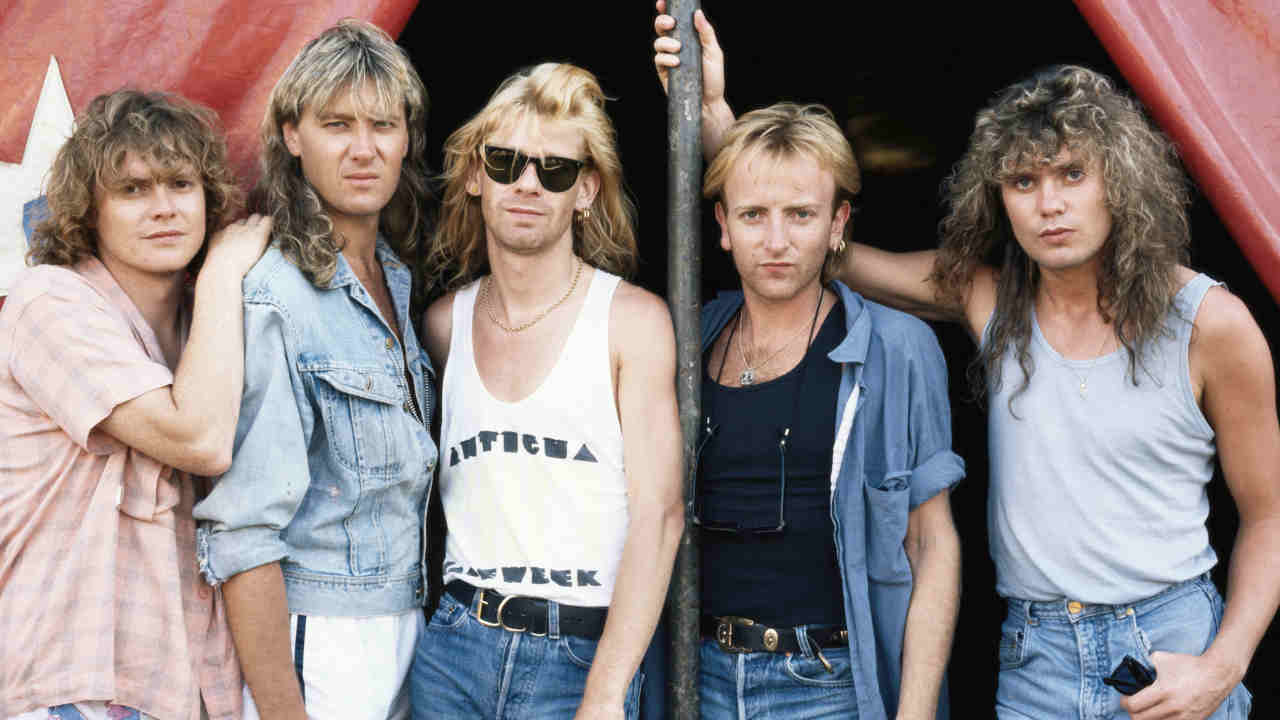
Def Leppard’s 1987 album Hysteria was one of the biggest selling albums of the 80s. In 2008, singer Joe Elliott looked back on a hard rock masterpiece.

The story of Def Leppard’s Hysteria is like no other. It involves an arm loss, three producers, three studios, two crashes… oh, and about three years of delays and frustration.
The Sheffield band hurled themselves into the recording of the album on the back of achieving enormous global success with their third album, 1983’s Pyromania, which had established the line-up of vocalist Joe Elliott, guitarists Steve Clark and Phil Collen, bassist Rick Savage and drummer Rick Allen as a global phenomenon. With that albums, had finally realised the potential first shown on their 1980 debut On Through The Night and developed a year later with High ’N’ Dry. Now the challenge was to follow the multi-million-selling Pyromania, which was only kept from the top of the US charts by Michael Jackson’s Thriller.
“When we started doing Hysteria, our producer ‘Mutt’ Lange – who’d done High ’N’ Dry and Pyromania – told us we should set out to make a hard rock version of Thriller,” recalls Joe. “He really did believe that this band were capable of making a record with seven potential hit singles on it – and he was right.”
Leppard pitched straight into making what was to be a career-defining album as soon as they came off a near year-long tour on the back of Pyromania. They didn’t ease down to enjoy their success – it was a case of getting stuck straight back in.
“Our last gig was on February 8, 1984 in Bangkok,” says Joe. “From there we flew to Dublin [the band were forced to become tax exiles after the huge finances generated by sales of Pyromania] and checked into a hotel for five days while we looked around for a suitable Young Ones-style house in which to base ourselves.”

Eventually, they settled on a five-bedroom locale on the outskirts of the Irish city. Lange flew over and the band concentrated fully on the job of writing a fresh batch of hot songs. Well, almost…
“You’ve gotta remember that we were all in our early 20s, single, and had been on the road for a year,” laughs Joe. “So not only did we write for the new album, but also partied really hard! In about six months, we got through about 300 bottles of vodka, 400 bottles of whiskey and cases of beer. It was insane.”
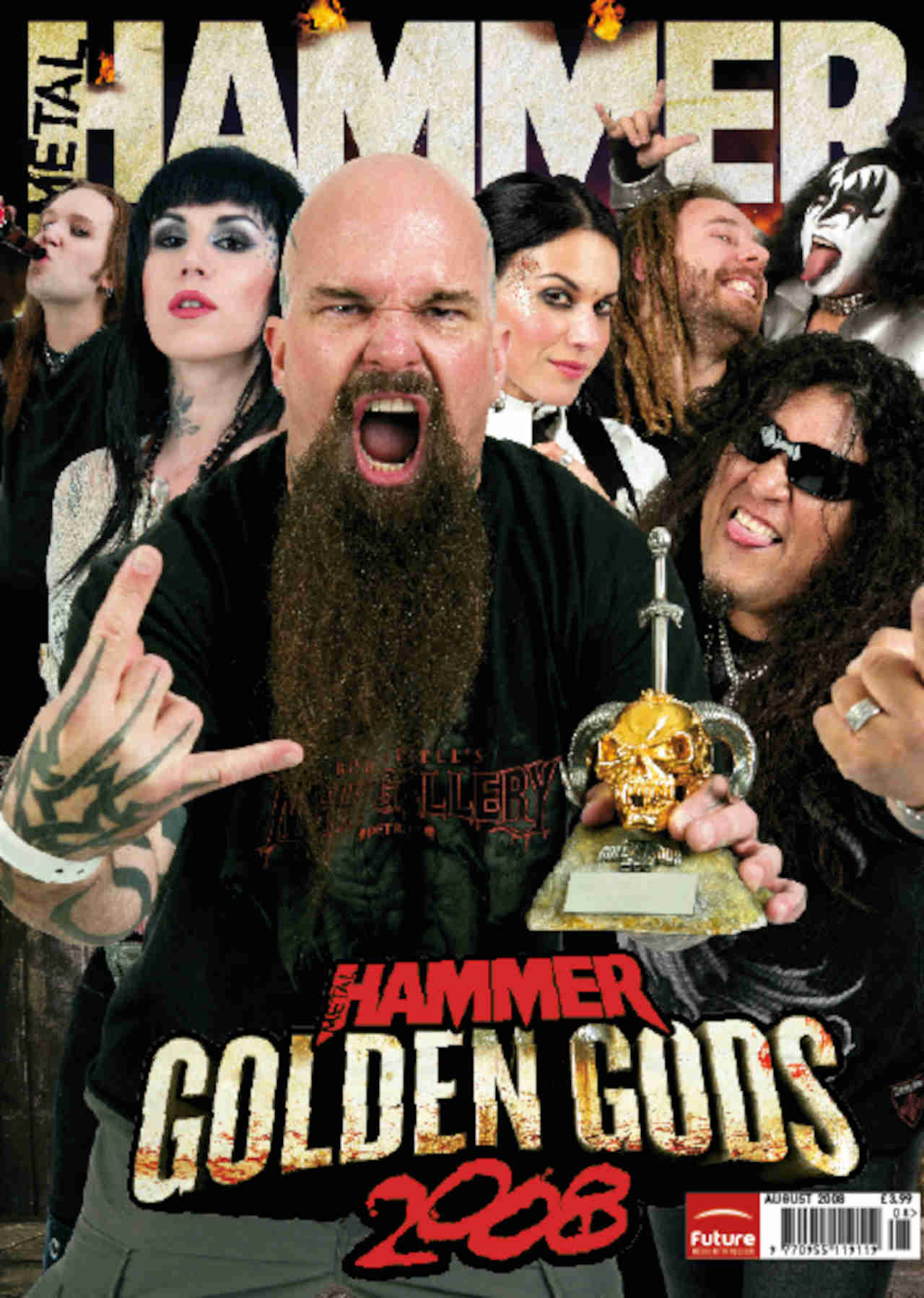
However, there was also a serious edge to what was going on – they were determined to top what had gone before, This wasn’t about emulating success, but taking everything to a new level.
“The first song we wrote was called Fractured Love, but Mutt rejected it, because all it seemed to do was tread old ground. We thought, ‘Here we go again. We’re back at school with the headmaster.’ But he was dead right. We had to pick up our game and raise it. That’s what all of us wanted. Eventually Fractured Love got used on our Retro Active album [1993], featuring unreleased stuff and rarities.
“What we came out with during those early days in Dublin were songs like Animal – although that got re-written countless times – Hysteria, Gods Of War. We felt that things were going in the right direction.”
However, Mutt somewhat surprised the band by opting out of actually producing the album, which was originally to be titled Animal Instinct – Rick Allen would eventually come up with the Hysteria idea.
“It was simply the fact that Mutt was exhausted after doing the Heartbeat City album for [new wave band] The Cars and needed a break. He was so into this project that he believed to be anything other than fully on the ball wasn’t fair. What we should have done was take a year out and wait for Mutt to get back his energy levels. But we made the mistake of agreeing to go with a different producer.”
They settled on Jim Steinman, the man behind Meat Loaf’s phenomenal Bat Out Of Hell album. It was to prove a bad error of judgement.
“Cliff Bernstein, who co-managed us with Peter Mensch, put his name forward. None of us were convinced. And we did try to point out to Cliff that Jim wrote the songs for Bat Out Of Hell, but Todd Rundgren produced it. However, despite the success of Pyromania, no other producer wanted to work with us. So we went with Jim, and then regretted it almost immediately.”
In August 1984, Leppard and their new producer headed for the residential studio of Wisseloord in Hilversum, Netherlands. But the liaison only lasted six weeks, when the band decided it was turning into a disaster and fired Jim.
“He really didn’t have the same mentality as us. Part of the problem was that he was writing the songs for the Bat Out Of Hell II: Back Into Hell album at the time. So he’d be up until nine in the morning, tinkering on a piano in his hotel room. We’d get to the studio at 11am and he’d turn up at 2.30pm. Typically he’d recline on a sofa while we’d be going through a song like Don’t Shoot Shotgun, and he’d say, ‘That sounds great. You don’t need to do anything else.’ We were just practising, and he was happy with it! One day we’ll put a song we recorded with him into a box set, and everyone can have a laugh. Yes, they’re that bad.”
The band elected to go forward with engineer Nigel Green (who’d worked on High ’N’ Dry) effectively co-producing the album with Leppard themselves. It was an idea suggested by Mutt…
“We were constantly talking to him, even when Jim was involved. We told Mutt that things weren’t working out, and he put up Nigel’s name.”
So, it was a case of starting all over again. But any gathering momentum on the album was about hit a wall – literally. On December 31, Rick Allen was involved in a horrendous accident. While driving to Sheffield for a New Year’s Eve party, the drummer misguidedly got involved in a high-speed race with a mystery driver, who’d been refusing to let him pass. He lost control of his Corvette Stingray on a bend. The car hit a wall and ended up in a field. Rick was thrown from the vehicle and his left arm was ripped off in the crash by a badly fastened seat belt.
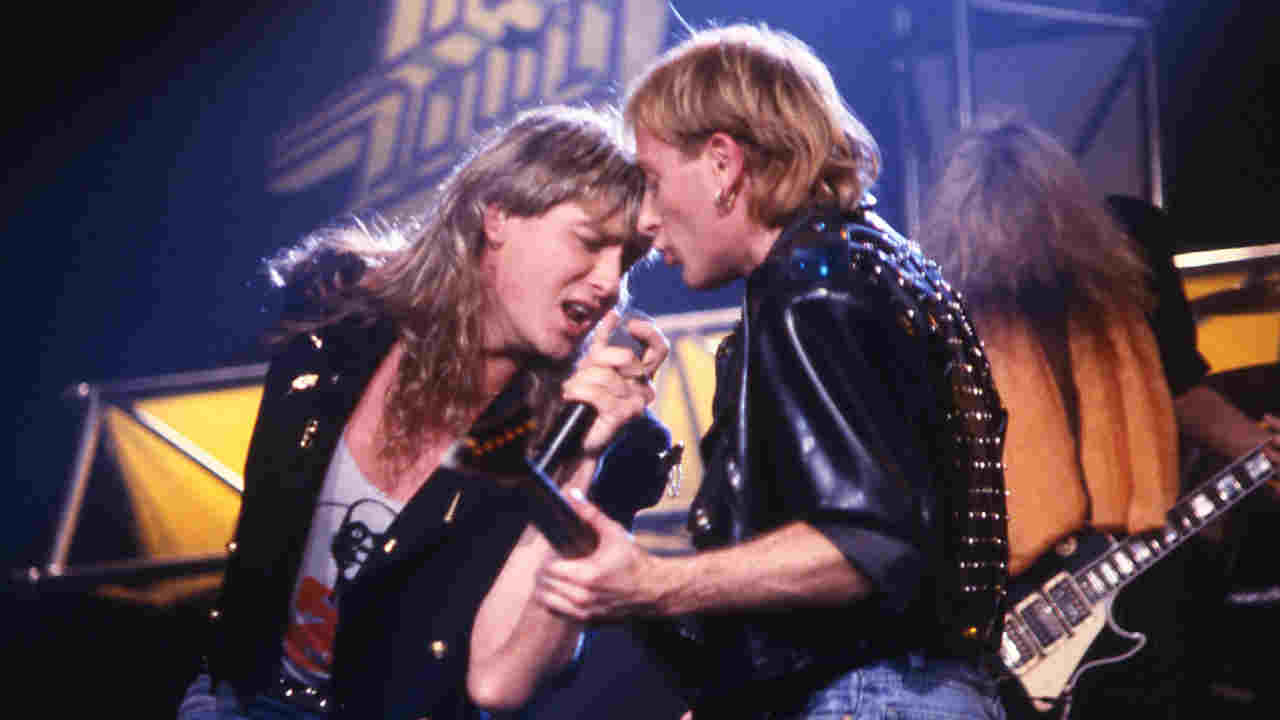
“You can imagine how we felt. There were tears and real concern for Rick’s health,” sighs Joe. “We were there when his arm was re-connected, then when it had to be taken off again, and put back on, and then they had to give up the attempt. Mutt went to visit him, and he was the first to put forward the idea that Rick might be able to use his left foot to trigger the snare drums. The two of them talked it through, and then Rick told us he believed he could carry on with the band. At first we were sceptical. A one-armed drummer – er, OK! But we wanted to give him the chance to see what could be done. We came to a decision that if it proved impossible for Rick to carry on, then it’d be his choice. We also had all the backing tracks for the drums already in the bag, so he could take his time in developing a special kit.”
By now Mutt was back on board, ready to fully devote his time to the project, and slowly everything recorded with Nigel Green for the album was replaced by new Mutt-approved recordings. Working in Wisseloord, Windmill Lane Studios (Dublin) and Studio Des Dames (Paris), Leppard and Mutt were determined to create the masterpiece that fired their ambition. However, another hitch occurred towards the end of the recording process when the producer himself was in a car crash.
“We must have seemed like we were jinxed back then,” Joe sighs. “For ages Jon Bon Jovi wouldn’t get in a car with me! Typically, though, Mutt might have had his leg up in plaster in a hospital bed, but he had a keyboard and notepad and was still working on ideas!
“People often think that we were Mutt’s puppets,” Joe continues. “Not true. It was a partnership. Sure, he came up with great ideas, but he also respected what we did. For me it was like the relationship between the Beatles and their producer, George Martin. There are those who point out that we haven’t had the same level of success since we stopped working with Mutt. The same applies to AC/DC, and they’re a great band.”
Aside from taking a brief break in the summer of 1986 to do some live shows, including the Monsters Of Rock festival at Donington, allowing Rick Allen to prove he could handle this side of things alone (Status Quo’s Jeff Rich had been on stand-by to augment their live sound), the band worked continuously into 1987 on the album. In fact, there was still mixing to be done by Mutt – at Battery Studios in London – when Leppard started their world tour in Ireland on July 5. The album was released in August, eventually topping both the UK and US charts. In all, there were six legitimate single hits from the record, with Women only just falling short. Leppard therefore almost achieved their dream of matching Thriller. An astonishing feat.
So, how does Joe now feel about a record that’s sold 18 million copies worldwide, one that became the benchmark for all hard rock albums recorded during that era?
“It’s a flagstone as much as it’s a flagship. Every album since gets unfavourably compared to it, and it’s unfair. Of course, it’s a defining album in our career, and I’m very proud of it. However, while we might have not done a great album since, I believe there have been good records with great songs.
“The trouble is,” Joe concludes, “when you’re so successful then the only way is down. But it’s lazy and unfair to say that Def Leppard are only about Hysteria.”
While Joe rightly believes Leppard have given us much more than Hysteria, nonetheless it remains one of the great albums of rock history – a pivotal, era-defining collection of inspirational songs.
Originally published in Metal Hammer issue 181, July 2008
